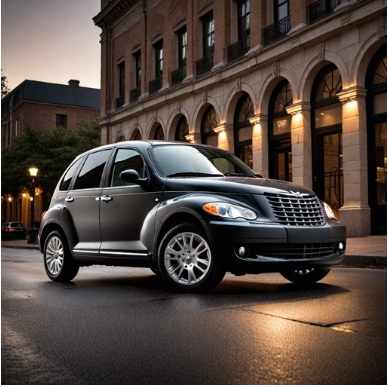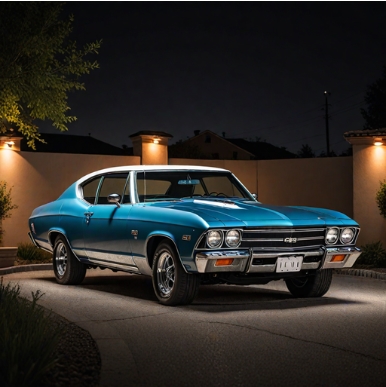The Evolution of the Chevrolet Venture
The Chevrolet Venture holds a distinctive place in the history of minivans, representing General Motors’ entry into the competitive family-oriented minivan segment in the late 1990s. Launched as a successor to the Chevrolet Lumina APV, the Venture was designed to offer practicality, comfort, and versatility for families and consumers seeking a spacious vehicle. This article traces the evolution of the Chevrolet Venture, detailing its production years, model variations, trim levels, and notable features.
Introduction and Background
The late 1990s marked a period of rapid growth and innovation in the minivan market. Consumers demanded vehicles that combined passenger comfort with cargo flexibility, ease of driving, and safety features. In response, General Motors developed the Chevrolet Venture, which debuted in 1997 as part of GM’s strategy to expand its minivan offerings alongside the more premium Pontiac Montana and the GMC Safari.
The Venture was built on the GM U-body platform, shared with the Pontiac Montana and the Oldsmobile Silhouette. Its primary aim was to provide a value-oriented option with a focus on family utility and affordability.
Production Timeline and Generations
First Generation (1997–2005)
- Introduction Year: 1997
- Discontinuation: 2005
- The first-generation Chevrolet Venture was produced for nine model years, encompassing several updates during its lifespan.
Second Generation (2005)
- GM introduced a refreshed second-generation Venture in 2005, which was essentially a carryover with minor facelifts and updates. However, the Venture’s production was relatively brief in this iteration, as GM shifted focus towards other minivan models.
First Generation (1997–2005): Development and Features
Launch and Design
Introduced in 1997 as a 1997 model year, the Chevrolet Venture was designed to compete with other minivans like the Chrysler Town & Country, Honda Odyssey, and Toyota Sienna. It featured a front-wheel-drive layout, a unibody construction, and a focus on spaciousness.
Model Years and Variations
Throughout its production, the Venture was available in various trim levels and configurations, reflecting market demands and technological updates.
Model Years and Trim Levels
1997–2000 Models
Initially, the Venture was offered with two main trim levels:
- LS: The base trim, equipped with standard features such as cloth upholstery, a 3.4-liter V6 engine, and basic amenities.
- LT: The higher trim level, which added features like upgraded interior materials, power windows and locks, keyless entry, and additional convenience features.
2001–2005 Models
In 2001, Chevrolet introduced a series of updates:
- Facelifted Front End: A new grille design and revised headlights provided a more modern look.
- Enhanced Features: Introduction of optional side airbags, improved interior materials, and the availability of more convenience options.
The trim levels remained largely consistent, but additional packages and options became available over time, including:
- LS: Continued as the base trim with standard features.
- LT: Offered more luxury and convenience options.
- LT Extended: An extended version with increased cargo space and seating configurations.
Special Editions and Packages
Throughout the production years, Chevrolet occasionally offered special packages, such as:
- Premium Package: Adding leather upholstery, premium audio systems, and additional safety features.
- Family Convenience Pack: Including rear-seat entertainment systems, power sliding doors, and other family-friendly amenities.
Powertrain and Mechanical Features
The Chevrolet Venture was powered predominantly by a 3.4-liter LA1 V6 engine, producing approximately 185 horsepower and 210 lb-ft of torque. This engine was paired with a 4-speed automatic transmission throughout its production run.
Key mechanical features included:
- Front-wheel drive as standard, with all-wheel-drive options available in some years.
- Suspension: Independent front suspension and a multi-link rear suspension for ride comfort.
- Braking: Anti-lock braking system (ABS) became standard in later years.
Interior and Safety Features
The Venture’s interior was designed for maximum versatility, with features such as:
- Stow ’n Go seating: Removable or fold-flat seats to maximize cargo space.
- Sliding doors: Power sliding doors became available as options in later years for easier access.
- Seating Capacity: Typically seating for seven, with configurations allowing for flexible arrangements.
- Entertainment: Optional rear-seat entertainment systems, including DVD players, became available in the early 2000s.
Safety features evolved over the years, with standard dual front airbags and optional side airbags. Traction control and stability control systems were introduced in later models.
Notable Updates and Facelifts
2001 Facelift:
- Exterior styling was refreshed with a new grille, bumper, and headlights.
- Interior received minor upgrades, including improved materials and optional features.
- Introduction of side airbags as an option.
2004–2005 Updates:
- Minor cosmetic changes, including new wheel designs.
- Improved safety features, including standard side airbags on higher trims.
- Enhanced interior comfort and technology options.
.
We LOVE cars & cruising around, but sometimes day trips to explore new cities are required (with family or friends) for a spice of variety in your life!
So GO explore!
Cruises & Day/Night City Tours to: Baltimore, Boston, Chicago, Marina Del Ray, New York, Niagara, Philadelphia, San Diego, San Francisco, Toronto, Washington DC, etc.:

.
End of Production and Legacy
Discontinuation in 2005
Chevrolet ceased production of the Venture after the 2005 model year. The decision was influenced by shifting consumer preferences toward SUVs and crossovers, as well as increased competition from other minivans like the Chrysler Town & Country and Honda Odyssey.
Replacement and Market Position
The Venture was effectively replaced by more modern minivan offerings, and GM shifted focus to other models such as the Chevrolet Uplander and later the Traverse, which targeted similar markets but with updated platforms and features.
Legacy
Despite its relatively brief lifespan, the Chevrolet Venture was appreciated for its spacious interior, affordability, and family-friendly features. Its role in GM’s minivan lineup helped meet the demands of the late 1990s and early 2000s families seeking versatile and reliable transportation.
Summary
| Year Range | Generation | Notable Features | Trim Levels | Engine Options |
|---|---|---|---|---|
| 1997–2000 | First | Basic features, initial styling | LS, LT | 3.4L V6 |
| 2001–2005 | First (facelifted) | Updated styling, safety features | LS, LT, LT Extended | 3.4L V6 |
Conclusion
The Chevrolet Venture exemplifies the evolution of family-oriented minivans during its production span, reflecting technological advances, safety improvements, and shifting consumer preferences. Its combination of affordability, versatility, and practicality made it a notable choice among minivans in the late 1990s and early 2000s. Although it was eventually phased out, the Venture’s contribution to GM’s minivan legacy remains recognized among automotive enthusiasts and families alike.







